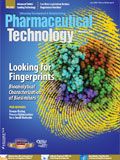Innovation Boom Towns
Partnerships between industry and academic medical centers are expanding to meet R&D needs.
Historically, the public sector has been a major contributor to basic research for drugs and biologicals while the majority of the work in late discovery, preclinical and clinical testing, regulatory approval, manufacturing, and product distribution was carried out by the private sector. Two trends in R&D have been building the past several decades, culminating in the expansion of industry–academic partnerships for biomedical innovation.
From academia, the commercialization of discoveries from basic research was facilitated in the United States beginning with the Bayh–Dole Act and motivated in part by the need to broaden academia's funding base. Industry also sought externalization of innovative R&D approaches and scientific knowledge to address complex, unmet medical needs. The Tufts Center for the Study of Drug Development (Tufts CSDD) recently reported the results of a year-long study, whose goals were two-fold: to typify the kinds of research projects that industry–academic partnerships entail (i.e., "the what") and to describe and categorize the organizational nature of these partnerships (i.e., "the how").
The "what" of partnerships
In terms of "the what," the Tufts CSDD reviewed primary data from more than 3000 grants to academic medical centers (AMCs) from 2008–2010 involving approximately 450 industry sponsors and 22 medical schools in 15 states and determined that they fell into three major classifications. Roughly 75% were collaborations between AMCs and industry that were by-and-large conventional clinical studies and trials focused on evaluating the safety and efficacy of new drugs or new indications.
Another 14% were comprised of otherwise conventional clinical trials considered by Tufts researchers to represent studies of high public-health priority requiring research environments with specialized characteristics. Among these were comparative clinical studies in which two or more treatments are compared with one another in an open-science environment; oversight studies (e.g., registry studies) in which privacy concerns dictate that AMCs are the most appropriate setting; vulnerable population studies for which AMCs can provide the optimum environment for patient care (e.g., neonatal studies); and breakthrough investigations (e.g., nanotechnology) in which AMCs can provide an environment for precompetitive collaboration and cross-disciplinary fertilization
The third category of grants (11%) entailed health research and educational projects that were not clinical trials or studies investigating a particular compound but instead involved a wide range of activities. For example, there were a number of collaborations in basic medicine (i.e., foundational studies examining the impact of diseases and drugs). Educational programs beyond basic medical school curriculum represent another example. While it is generally acknowledged that the educational process for medical practitioners and researchers is lengthy and expensive, what is sometimes less well recognized is that the process never stops. Such programs were often focused on the needs of particular physician groups, for example, Haitian orthopedic surgeons or community practitioners interested in the latest diagnostic and treatment updates in endocrinology.
The "how" of partnerships
While innovative technology is essential to advancing the frontiers of biomedical R&D to create innovation that changes the way things are done or so-called disruptive innovation, there must be both technological and business innovation (1). The Tufts CSDD examined secondary data from a variety of sources to describe "the how," meaning the ways and means of the business relationships between AMCs and their industry partners. Industry–academic partnership models fall into three broad categories: commonly used, increasingly popular, and, emerging. Examples of ones commonly used are unrestricted grants and fee-for-service models that anecdotal reports indicate may be on the wane.
Academic drug-discovery centers, which are independent centers affiliated with universities, fall into the category of increasingly popular models. These independent centers affiliated with universities represent a type of academic spin-off in reverse (i.e., industry entrepreneurs forming academic units). Much of the leadership and staff at these centers are from industry, and support from commercial sources can be as high as 50% (2). Lastly, emerging models can be exemplified by risk-sharing partnerships in which companies and academic institutions share the control of a research project and split the contribution of resources and assets.
Facing an increasingly challenging R&D and healthcare environment, we are likely to witness more industry–AMC partnerships in the biomedical landscape.
Christopher Milne is associate director with the Tufts Center for the Study of Drug Development, Christopher.Milne@tufts.edu.
References
1. K.A. Schulman A.V. Vidal, and C.D Ackerly, Gene. Med. 11 (8), 577–581 (2009).
2. S. Frye et al,. Nat. Rev. Drug. Discov.10 (6), 409–410 (2011).

Drug Solutions Podcast: A Closer Look at mRNA in Oncology and Vaccines
April 30th 2024In this episode fo the Drug Solutions Podcast, etherna’s vice-president of Technology and Innovation, Stefaan De Koker, discusses the merits and challenges of using mRNA as the foundation for therapeutics in oncology as well as for vaccines.
Drug Solutions Podcast: Applying Appropriate Analytics to Drug Development
March 26th 2024In this episode of the Drug Solutions Podcast, Jan Bekker, Vice President of Business Development, Commercial and Technical Operations at BioCina, discusses the latest analytical tools and their applications in the drug development market.
INTERPHEX 2025: Use of Walk-In Chambers for Bio/Pharma Development and Manufacturing
April 2nd 2025Sitting down with the PharmTech Group at INTERPHEX 2025, Christopher Murphy, director of Global Business Development and Service Customer Support at Environmental Specialties, discusses the design and critical role of walk-in chambers in the bio/pharmaceutical industry.